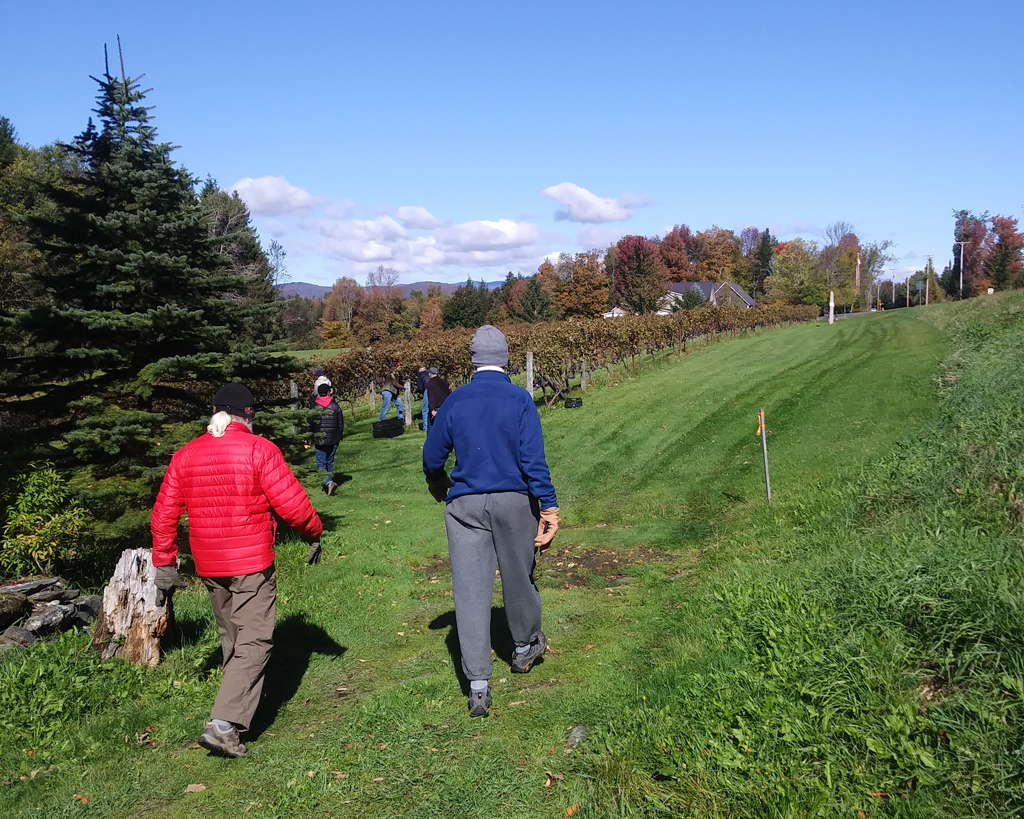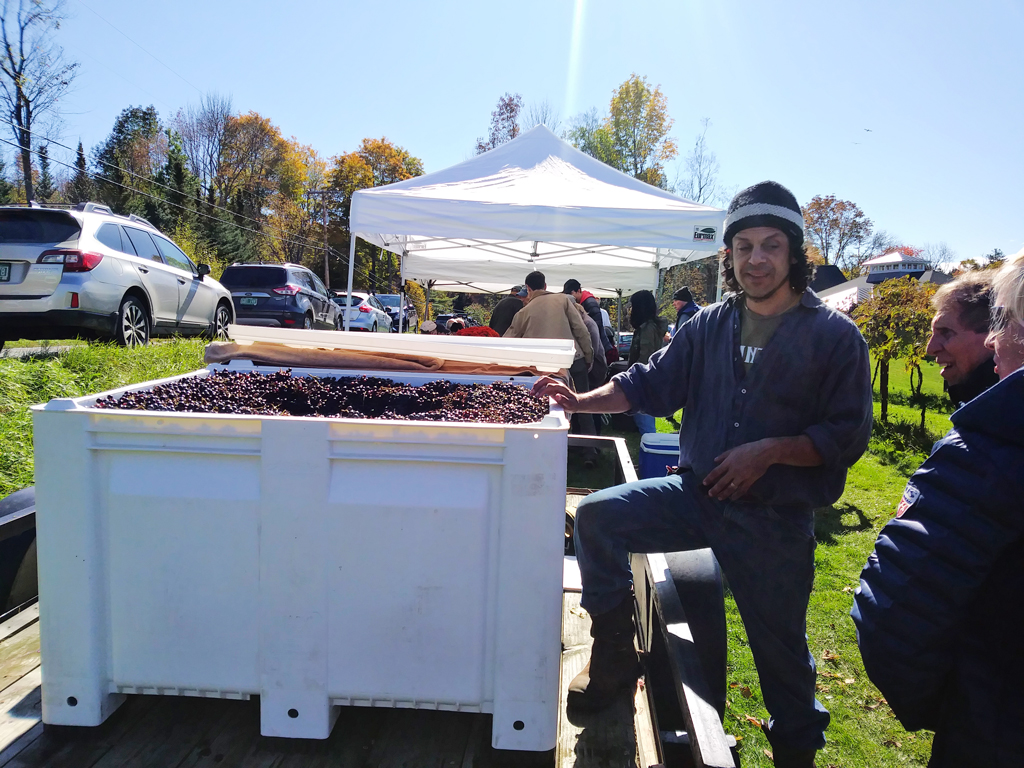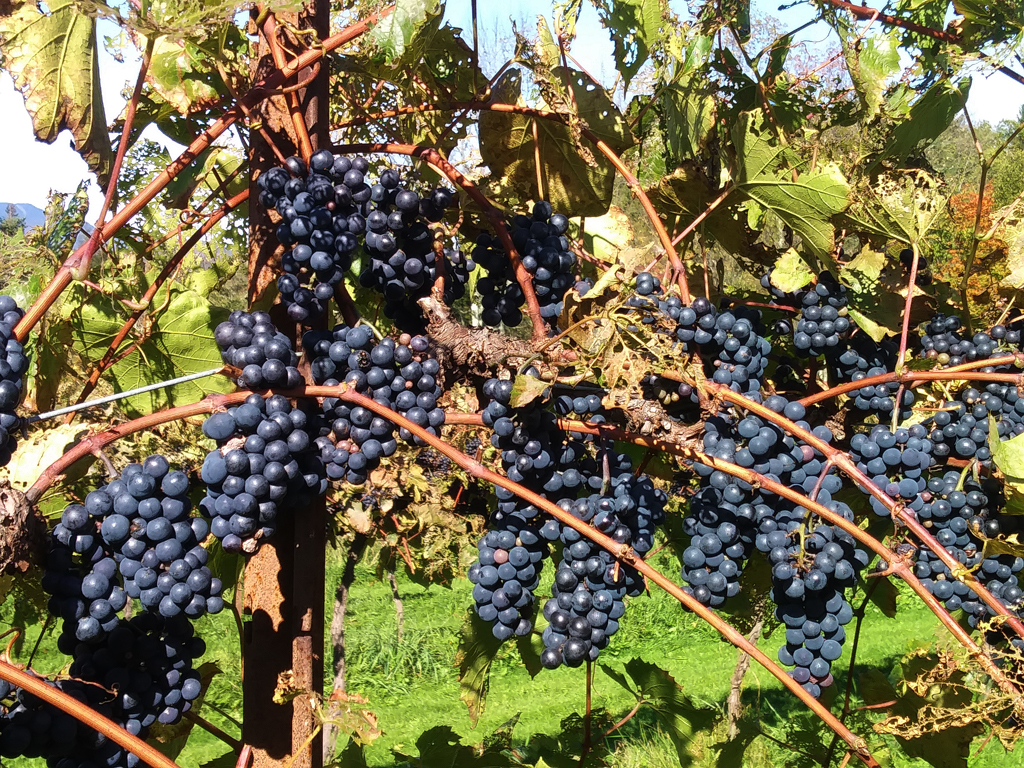Saturday morning, October 5, a few dozen plucky Valley residents (and a handful of out-of-towners) gathered at Mad River Vineyard on East Warren Road in Waitsfield to lend a hand with the grape harvest.
It's important that the entire harvest of wine grapes be harvested all at once, which is why the vineyard puts out the call for volunteers one day each fall. The October 5 gathering had a true community feel. Many volunteers had been there in years past. Some, like this writer, were grape-harvesting newbies grateful for the more experienced harvest buddies.
CARDINAL RULE
The harvesting itself is not particularly difficult. Volunteers were given one cardinal rule before starting: to hold the grapes from underneath, not the stem, as they are clipped. It’s easy to get into the rhythm of letting the fat clusters of grapes fall in one hand and then dropping them into the bin.
Many clusters are easy to gather, but occasionally one finds a challenging bunch that has grown between the vines and the wires. Green, under-ripe grapes need to be removed, but the bins fill quickly.
The first variety that volunteers harvested was Marquette. Mad River Vineyard also grows Frontenac and Petite Pearl varieties. All of these varieties were researched before planting and are hardy to 30 below zero, easily able to survive Vermont winters. There had been a hard frost the night before the harvest and many wondered if the grapes had been damaged. That was not the case. Unless the temperature drops to 25 degrees or less for over six hours, the grapes remain unaffected.
Mad River Vineyard founders Joe and Carol Klimek, Tom Golodik and Kathleen Rubel came together over their common love of all things Vermont. Thinking about the vineyards that they visited in California, France and Italy, Joe Klimek and Golodik wondered: “Can we grow wine grapes in Vermont's climate? The answer was a resounding yes. Thousands of hours were spent researching, planning and preparing before the first vines were planted in June 2000.

A GLASS OF WINE
Of course, the humble harvesters couldn't help but wonder how many grapes go into a glass of wine. And now they know. A good-size cluster of grapes equals about a glass, and about four clusters go into a bottle of wine. A barrel of wine holds 60 gallons, which is equal to about 750 bottles of wine. This vineyard is estimated to produce about two barrels, so roughly 1,500 bottles of wine will come from the harvest this weekend.
The grapes are headed to Vergennes, where ZAFA Wines has acquired all the grapes grown in The Valley. An estimated 8 to 10 tons of grapes come out of the Mad River Valley each year. Those grapes will become around 60,000 bottles of wine.

NEXT STEP
Of course, volunteers were also curious about the next step for these beautiful fresh grapes they were picking. After harvesting, the grapes go through the crushing and destemming process. This creates the “must” (pulp) and is the equivalent of stomping the grapes in times past. When the grapes are crushed whole, red wine is the result. All the skins and seeds are left in the pulp to allow it to attain additional tannins, flavor and color. For white wines, skins must be removed prior to fermentation.
The winemaker adds yeasts to kick start the fermentation process. After seven to 10 days of fermentation, the “must” is pressed to remove all the peels and seeds and clarify the wine-to-be. The leftovers are used for various purposes such as hog feed, so nothing goes to waste. Then the wine gets another aging, possibly in barrels or steel tanks, or in some cases right in the bottle. Once the final fermentation finishes, the wine is bottled for consumption.
The next time readers are enjoying a relaxing glass of wine, think of the work that went into it. And, perhaps next fall, consider coming out to help with the harvest.






